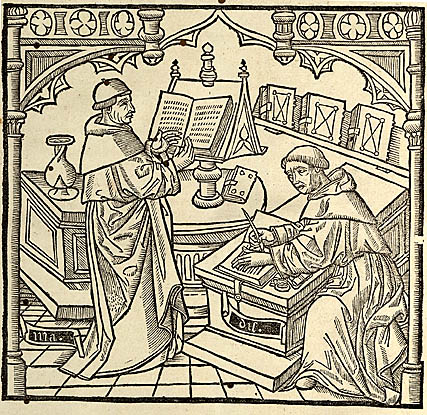
The Period before Printed Books
Page 1 of 3
The Egyptians, Greeks and Romans used rolls made of papyrus, a marsh plant from the Nile Delta, for writing. The papyrus was laid in several layers on top of each other and was processed into a white paper suitable for writing by rubbing. For shorter texts the Greeks and the Romans also used the more durable vellum. Vellum was manufactured from untanned animal leather which was scraped and then smoothed with pumice stone.
From the second century A.D. on, there was a
gradual change from rolls to the book form we know today. Vellum was used.
The so called "codices" were copied in monasteries by monks who added
colored illustrations of the texts and decorative foliage.
 |
|
Monastery: While one monk reads out the text another
writes it down.
|
The process of manufacturing paper only arrived in Spain via the Arab countries late in the 12th century. The first paper mill in the German empire was founded in 1390 in Nuremberg. This, of course, was a vital prerequisite for the mass production of printed books. But even at that time, all texts had to be laboriously copied by hand.